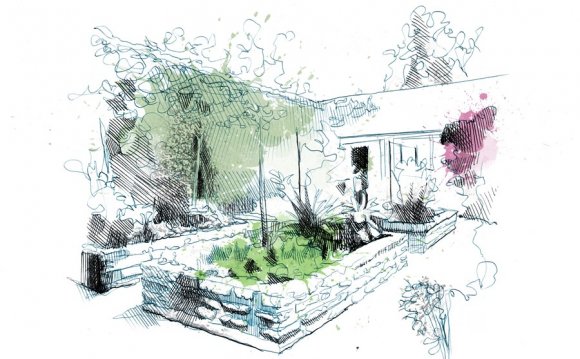
My decision to study architecture was a naive one, made after having taken several vocational tests I found on Google. When I found out it was one of the toughest courses in Brazilian public universities, I thought about giving up. But I was already hooked by the history of architecture and its social role.
However, nothing is perfect. Architecture and Urban Planning is one of the most elite courses in the most renowned Brazilian universities, something that is reflected outside of the classroom as well. The architects went on to serve the rich, casting aside the needs of the cities and the poor.
 For Elizabeth France, architect who coordinated the Environmental Sanitation Program of the Guarapiranga Basin for seven years and was Superintendent of the Municipal Housing in São Paulo between 2005 and 2012, said this trend is changing:
For Elizabeth France, architect who coordinated the Environmental Sanitation Program of the Guarapiranga Basin for seven years and was Superintendent of the Municipal Housing in São Paulo between 2005 and 2012, said this trend is changing:
There are people without access to even the most fundamental of conditions and rights, such as basic sanitation, and architecture seeks to resolve it. Another issue that is discussed in architecture is the question of immigration. Demanding rapid solutions to housing and the expansion of cities.
Even though class issues has been discussed by the niche of the profession, architecture must also recognize the debates on race and gender. These can no longer be neglected in course curriculums. So in my first year, one of my priorities was to search for women and men like me: black architects and urban planners who are as recognized as much as Paulo Mendes da Rocha, Oscar Niemeyer, Artigas, and Siza.
In my search, I found that in addition to Zaha Hadid and Lina Bo Bardi, there are plenty of women who stood out in Architecture and Urbanism. In the professional field, they’re able to have a voice and recognition.
 One of the things I always dreamed of was stepping in a building designed by a black woman like me. It was then that I became acquainted with the work of Georgia Louise H. Brown, a pioneer of modern architecture in the United States. In São Paulo, at the intersection of Av. Ipiranga with Av. São João, there are records indicating that the Citibank building was designed by her, and she has worked with big names like Mies van Rohe. Also in São Paulo, Brown designed houses for the Matarazzo family. Apparently, the Brazilian elite appreciated her talent.
One of the things I always dreamed of was stepping in a building designed by a black woman like me. It was then that I became acquainted with the work of Georgia Louise H. Brown, a pioneer of modern architecture in the United States. In São Paulo, at the intersection of Av. Ipiranga with Av. São João, there are records indicating that the Citibank building was designed by her, and she has worked with big names like Mies van Rohe. Also in São Paulo, Brown designed houses for the Matarazzo family. Apparently, the Brazilian elite appreciated her talent.
Brown went to Brazil because she believed she would have more opportunities as a black woman than in the United States. She was part of a chapter of the Chicago Alpha Gamma, a professional association of architects and was probably the first black person in that organization. Georgia Louise Brown was particularly noteworthy at the time since Brazilian black women hadn’t yet had the opportunity to study Architecture and Urbanism in Brazil.
Allison Williams, also black and American, was responsible for defining the design strategy of Perkins & Will architectural firm in San Francisco. As the main architect, she works on company projects that include cultural institutions, business facilities and high-rise developments. Some of her major projects include: August Wilson Center for African American Culture in Pittsburgh; The San Francisco Civic Center Complex; The Singapore National Research Foundation; Jan and Dan Duncan Neurological Research Institute.
 Charlotte Perriand is one of the most wronged names in architecture. Her works are loved and revered, but due to cotroversy or plain error, they are sometimes attributed to other people (in this case, men). In 1925, she exhibited a wall in the Exposition des Arts Décoratifs. Three years later, after having already gained prominence in the area, Charlotte received two books, Vers une Architecture and L'art Decoratif D'aujour D'hui. At that moment, she decided to take a chance and applied for a job at the acclaimed Le Cobusier studio.
Charlotte Perriand is one of the most wronged names in architecture. Her works are loved and revered, but due to cotroversy or plain error, they are sometimes attributed to other people (in this case, men). In 1925, she exhibited a wall in the Exposition des Arts Décoratifs. Three years later, after having already gained prominence in the area, Charlotte received two books, Vers une Architecture and L'art Decoratif D'aujour D'hui. At that moment, she decided to take a chance and applied for a job at the acclaimed Le Cobusier studio.
"We do not need embroiderers here." That was the sentence handed down by the renowned architect in response to Charlotte. Only when she began to excel in furniture design was that refusal reconsidered and Charlotte hired to do the internal furniture projects for the office customers.
Dora Alcântara also stood out in the midst of this male dominated profession during the 1960’s. Shaped by the National School of Architecture, Current FAU / UFRJ, she has dedicated her career to teaching and to the preservation of heritage. By studying tiles, photographs and sketches, she became a researcher of Brazilian tiles. When interviewed on gender issues by CAU / BR Alcântara said:
I think men and women produce very good work when working together because they have complementary sensibilities. As women enter the market, I hope that the fusion of sensibilities let's us present something new, especially in architecture.
According to her, women's presence in architecture has been noticed since the 60s, but it is still new and not very recognized.
It is important to highlight other forms of architecture, where women architects succeeded beyond the construction of buildings or large homes, showing that the plurality of the profession and the emergence of women spreads across all fields.
Gender Issues: Patricia Anahory
Patricia Anahory, who completed her studies in Boston and studied her master's degree in Princeton, has discussed the gender, societal control in architecture in the publication "Reframing the Body: The Women's Prison." The publication revolves around the intersection of these issues and how architecture is manifested in this context.















